Telescopes and observatories
Why choose ProjectSoft?
Our specialization is the reconstruction of existing astronomical telescopes, domes, spectrographs, and other astronomical instruments that require control, robotization, and automation. Our solutions ensure short lead times of weeks, including turnkey deliveries. We only use industrial solutions and components that fundamentally increase the life of the modernized device. With this, we have solved the most pressing question of astronomical instruments, and that is spare parts. They are now available to everyone, everywhere, regardless of supplier.
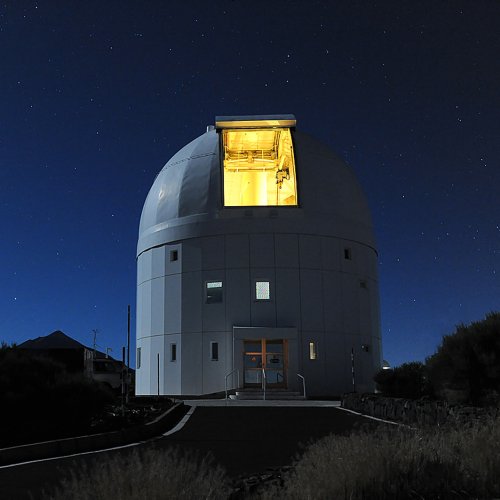
Our astronomical beginnings
The company considers the robotization of the miniature observatory of amateur astronomer Zdenek Bardon (ProjectSoft HK a.s.) to be the beginning of the robotization of astronomical telescopes, followed by the implementation of the control of a telescope with a mirror diameter of 0.5m. These first "astronomical swallows" gradually led us to the victory in the tender and the subsequent realization of the control system reconstruction for the 2m Perk telescope of the Astronomical Institute of the Academy of Sciences of the Czech Republic at the observatory in Ondřejov.
Our most important applications
 ING - control of the WHT (William Hershel Telescope)
ING - control of the WHT (William Hershel Telescope)
Our largest astronomical project was a complete reconstruction of the control system for a telescope named after William Hershel - an astronomer, telescope designer, and music composer. The telescope has a mirror diameter of 4.2 m. At the time of its construction, it was the third-largest telescope in the world, now it is the second-largest telescope in Europe. The telescope is located on the island of La Palma, near the highest peak of Roque de los Muchachos.
The project aimed to the replacement of the telescope's outdated control system, controlling all the motors that ensure all of the telescope's movement. The Beckhoff system with a number of distributed modules is used for this control. The visualization system TomPack, a product of ProjectSoft, is used as SCADA system. In addition to switchboards, cabling, software, and the project, the delivery also included a very complicated adjustment of the motor controls with regard to the high requirements for the telescope's accuracy.

 ESO - robotization of the 1.54m Danish telescope at La Silla Chile
ESO - robotization of the 1.54m Danish telescope at La Silla Chile
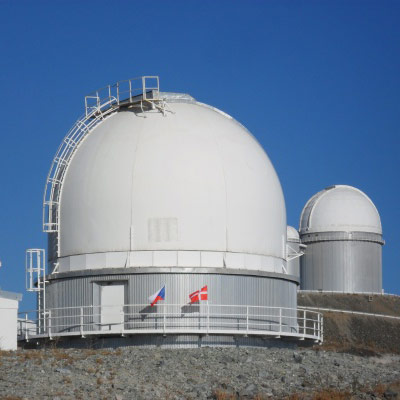
Our approach - to use industrial solutions and components that fundamentally increase the life of the modernized device has solved the most pressing point of astronomical instruments, and that is spare parts. They are now available to everyone, everywhere, regardless of supplier. This approach got us as far as the reconstruction of control system and complete remote control of the Danish 1.54m telescope at LaSilla in Chile. The telescope is controlled from Europe without the presence of an observer.
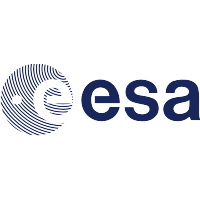 ESA - robotization of the OGS 1m telescope on Tenerife
ESA - robotization of the OGS 1m telescope on Tenerife
The main goal of the project was to expand the possibilities of observing and increasing the accuracy of the trajectory of objects moving near the Earth. Not only satellites are meant, but also space debris, asteroids, etc. The results of the project can be used in many applications, such as ground stations for Meteosat 3rd generation, GMES satellites, or optical ground stations.
The result of the project was the installation of an industrial control system at the OGS (Optical Ground Station) in Tenerife, which belongs to ESA and specializes in laser satellite communications.
The original system suffered from many problems, such as low accuracy, unreliability, and obsolescence. The main task was therefore the development of a new innovative control system, whose main attributes are high accuracy and speed of positioning, reliability, safety, easy serviceability, functional extensibility, and openness to other related systems.
The result of the project was the installation of an industrial control system at the OGS (Optical Ground Station) in Tenerife, which belongs to ESA and specializes in laser satellite communications.
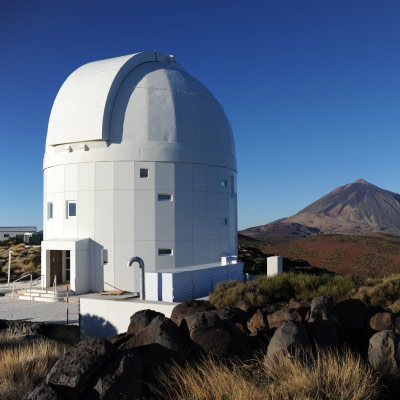
2m telescopes
2m Carl Zeiss Jena telescopes
Four of the five 2m telescopes manufactured in Carl Zeiss Jena have already been robotized by our company.
Robotization and control of astronomical telescopes is a very complex task that requires knowledge from many fields - mathematics, control theory, astronomy, advanced programming techniques, etc. Many years of experience with automation in various industrial fields helped us a lot with the solution. Paradoxically, the control tasks in the industry are very similar to the ones for telescopes. The key element of our solution is the usage of standard industrial components and programmable logical computers (PLC). This unique solution significantly increases the safety and reliability of astronomical instruments.




The largest Czech telescope on Ondřejov
Perk 2m telescope
The control system, remote robotization
A standard industrial control system from Siemens was used to control the telescope. To do this, it was necessary to create a special set of math libraries. The complete control program works directly in the programmable controller (PLC). Thus, all calculations take place in one processor, with the exclusion of remote communication, which ensures the maximum possible speed and reliability of control. PCs are used for visualization and operation only. However, the telescope can be operated without a PC, using a standard TCP/IP protocol. This enables complete remote operation of the telescope and also ensures spare parts availability and the long life of the system in an elegant way.
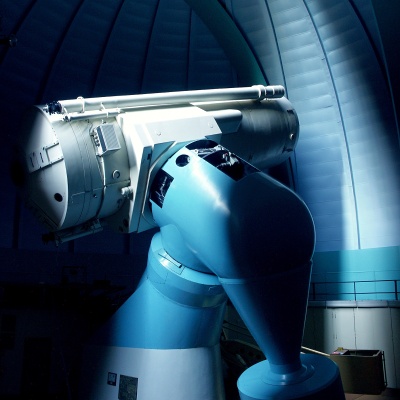
A telescope sleeving to new coordinates
A correction model, eliminating mechanical inaccuracies of the telescope is built right into the controller. We have thus achieved an order-of-magnitude improvement in the accuracy of the telescope movement to new coordinates and keeping the observed object in the crosshair. Thanks to sophisticated regulation, the sleeving of the telescope was accelerated, which is manifested by a significant reduction in the time of moving to new coordinates. For example, the accuracy of the 2m telescope positioning has improved from the original 300 arcs to the current 6 arcs! The system includes calculations of precession, refraction, aberration correction, nutation, etc.
Autoguider
The system allows the use of external cameras for very precise auto-guiding.
Safety
An equally important contribution of the reconstruction is the increase in the safety of the telescope movement. All limit states are checked by two or three sensors. The system monitors weather conditions and reacts flexibly to them. It goes without saying that the dome control is integrated with the soft start of all motors to avoid vibrations.
Why industrial PLC
Thanks to our twenty years of experience with industrial automation, we were able to use the same control system that controls production in the Czech brewery Českobudějovický Budvar, n.p. (and not only there) also for the demanding control tasks of astronomical telescopes. This solution has a number of advantages:
- the high service life of all components
- a rich assortment of expandable cards - inputs, outputs, counters, etc.
- hassle-free worldwide service and spare parts
Using a standard PLC is preferable to using a "classic" computer, regardless of the usually higher computing power and more flexible options of PCs.
- the complete control program is implemented directly in the PLC. Thus, all calculations take place in one processor, with the exclusion of remote communication, which ensures the maximum possible speed and reliability of control.
- the machine has significantly higher reliability than a standard PC
- the PLC contains a full-fledged RealTime operating system
PCs are used for visualization and remote control tasks only. However, the telescope can be operated without a PC, using the standard TCP/IP-based protocols. Placing the critical parts of the telescope control into the PLC and the auxiliary parts in the PC enables complete remote robotization of the telescope..
Fully robotic observatory of ProjectSoft HK a.s.
Many years of experience in automation and robotization of astronomical devices resulted in the project “Development of the technologies for fast robotic observatories and laser communication systems”. The project itself has been realized thanks to the company's know-how and with the cooperation with the Astronomical Institute UK Prague, supported by the Technology Agency of the Czech Republic (TA ČR). Within only 18 months a fully robotized observatory, which was called “Blue Eye”, was designed, built, and installed.
On ultra-speed Alt/Az installation (speed of moving is up to 90°/sec) a RC optical system telescope with a diameter of the mirror of 0.6m is installed. The construction, which is exclusively based on industrial components including PLC Beckhoff, is equipped with the most modern direct-drive control. A special dome is designed so that it enables fast opening and doesn't prevent the telescope from fast moving. All modern industrial electronics are installed in a special container and a number of meteorological sensors independently care about the ultimate safety of the whole observatory.
Observing can be performed in several modes such as local, remote, or fully robotized ones with the usage of the planning software which enables the astronomer nice calm sleep in his bed while the telescope works absolutely independently. The communication interface with the implemented ASCOL protocol allows customers to create their own remote control set. The aim of this project is universality, full automation, speed of slewing, and mobility. Everything is easy to be disassembled, moved, and assembled again without the necessity to cast concrete pillars. All these aspects considerably decrease installation costs.
With the kind permission of the Astronomical Institute AV ČR, v.v.i., the Blue Eye observatory is placed for testing on the premises of the observatory in Ondřejov.
This complex observatory can be used not only in astronomy but also for monitoring gamma rays, laser terminals and rangefinders, searching for cosmic debris/satellites, etc. For future customers, we anticipate more variants of use, and we deliver the observatory on a turnkey basis including installation.


